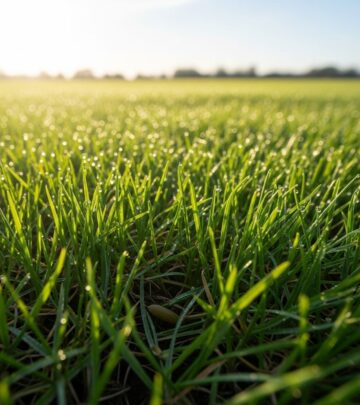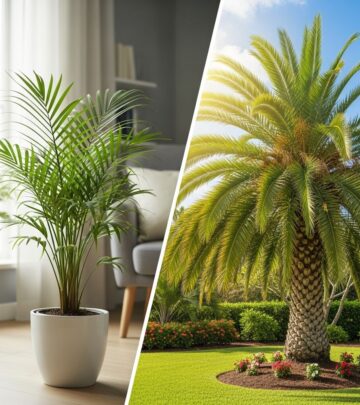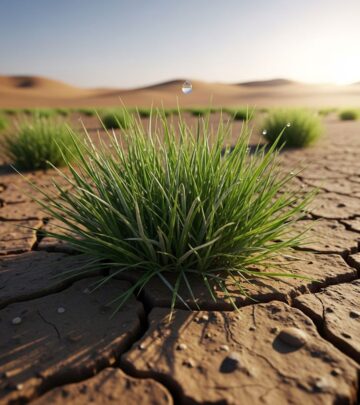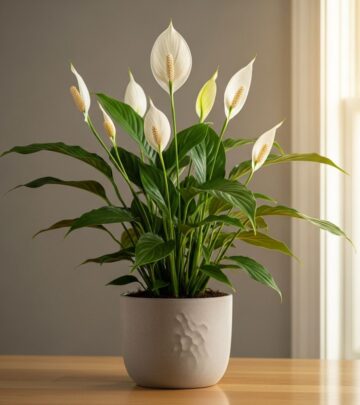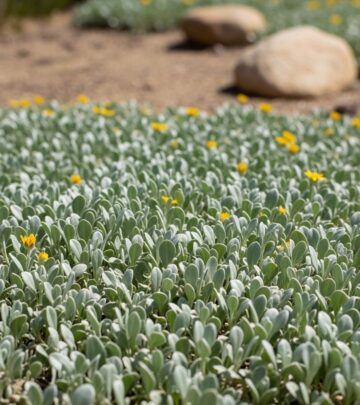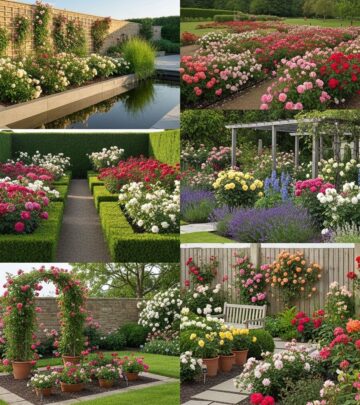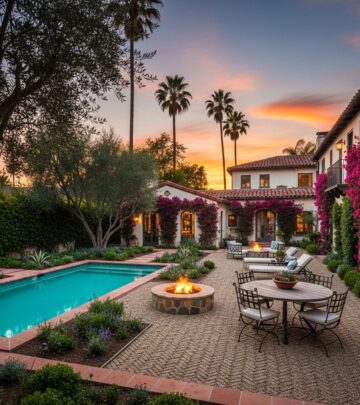Rock Garden Design Ideas: A Complete Guide For Year-Round Beauty
Transform your outdoor space with creative layouts, smart tips, and expert landscaping hacks.
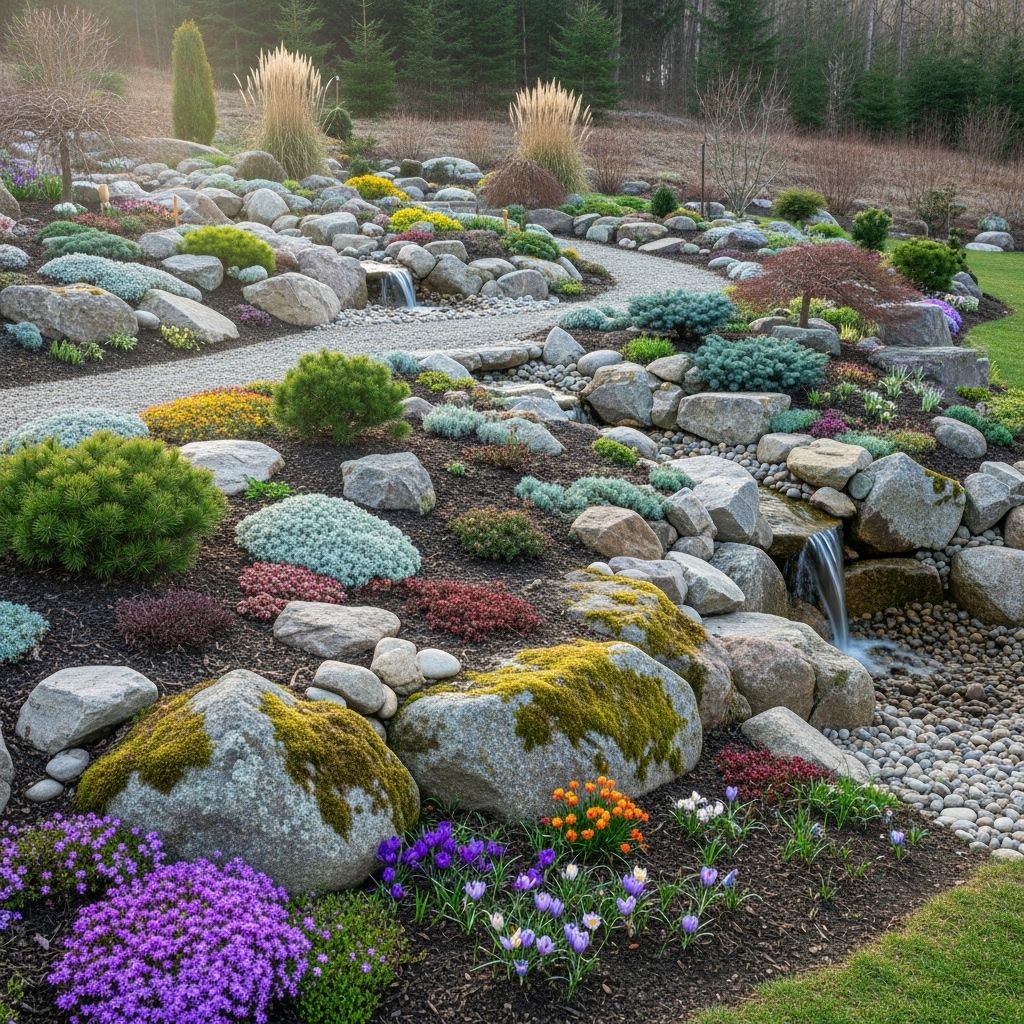
Image: HearthJunction Design Team
Rock Garden Design: Ideas, Principles & How-To Guide
Rock gardens are a dynamic way to add natural beauty, structure, and year-round interest to your landscape. Whether you’re working with a challenging slope, looking for a low-maintenance alternative to grass, or simply want to bring a new textural dimension to your outdoor space, thoughtfully placed stones and carefully chosen plants create rich visual impact. This comprehensive guide explores core design principles, inspiring ideas, planning tips, rock and plant selection, building steps, and care techniques to help you create a stunning rock garden suited to your style and site.
Benefits and Appeal of Rock Gardens
- Versatility: Suitable for slopes, awkward areas, containers, or even small corners of a garden.
- Year-Round Interest: Rocks lend permanent structure, while plants provide changing colors, forms, and textures with the seasons.
- Low Maintenance: Well-designed rock gardens reduce the need for mowing, watering, or frequent weeding.
- Water Efficiency: Many rock garden plants are drought-tolerant, making them a smart choice for dry climates.
- Habitat Creation: Rock crevices provide homes for pollinators, lizards, and other beneficial wildlife.
Design Principles for Rock Gardens
Successful rock gardens draw inspiration from naturally occurring rocky outcrops. Cohesion and integration with the landscape are key. Here are fundamental principles to guide your planning:
- Harmony: Choose rocks and plants that complement each other and fit your garden’s overall style.
- Balance: Scale rocks and plant groupings to match the garden’s dimensions, ensuring features don’t overpower the space.
- Contrast & Texture: Use a mix of upright and spreading plants, and blend contrasting leaf forms and colors to highlight the ruggedness of rocks.
- Naturalism: Arrange rocks and plants to mimic patterns found in nature, avoiding rigid or symmetrical layouts.
- Focal Points: Incorporate a standout boulder, distinctive plant, or water feature to anchor the design.
Planning Your Rock Garden
Advance planning lays the foundation for a cohesive, beautiful result:
- Site Selection: Choose an area that receives ample sunlight and offers good drainage – key for most rock garden plants.
- Style Decision: Decide on the visual theme – alpine, Japanese, contemporary minimalist, or naturalistic woodland, for example.
- Sketch the Layout: Draw a simple plan, noting rock placement, paths, plant groupings, and elevation changes.
- Scale Appropriately: Match the size of rocks and features to your yard; small spaces benefit from delicately scaled rocks and plants, while expansive gardens can handle large boulders and sweeping drifts.
- Blend with Surroundings: Use materials and plants that harmonize with existing landscape elements, including buildings, fences, and trees.
Inspiring Rock Garden Styles
- Alpine or Mountain: Mimics high-altitude landscapes with rugged outcrops, gravel mulch, and low-growing alpine plants.
- Japanese Zen: Employs carefully raked gravel, minimalism, accent boulders, moss, and subtle plantings to evoke tranquility.
- Contemporary: Features clean lines, sculptural stones, and bold foliage, often in monochromatic or limited palettes.
- Cottage or Informal: Combines stones of various sizes with a riot of perennials, bulbs, and groundcovers for a relaxed, colorful effect.
- Container Rock Gardens: Ideal for patios or small spaces, using troughs or pots filled with gravel, small rocks, and miniature plants.
Choosing and Arranging Rocks
Rocks are the backbone of your garden – their placement and selection make all the difference:
- Source Locally: Opt for stones that match your regional geology to achieve a natural look and minimize costs.
- Mix Sizes: Combine keystones (anchor boulders), medium stones, and smaller rocks to create visual interest and naturalistic layers.
- Placement Tips:
- Sink rocks with about one-third of their mass below ground for stability and a natural effect.
- Arrange rocks so their layers or grain lines slope in the same direction.
- Group stones irregularly in clusters rather than neat rows to mimic nature.
- Avoid symmetry; instead, stagger rocks to create movement and flow.
- Create Terraces or Levels: Use rocks to retain soil, manage slopes, and build planting beds at different heights.
Soil Preparation & Drainage
Healthy, well-drained soil is critical for rock garden success:
- Weed Removal: Thoroughly clear all weeds and grass from the site before starting.
- Improve Drainage: Loosen soil and, if needed, add coarse sand, gravel, or grit. In heavy soils, build your garden above ground level or on a slope.
- Planting Mix: Use a gritty blend such as equal parts loam, horticultural grit, and compost or leaf mold for optimal root health.
- Layering: Start with larger rocks at the base, then fill in with soil and smaller stones.
Step-by-Step: Building a Rock Garden
- Clear and Outline: Mark the garden area, remove all organic debris, and edge with a spade.
- Lay the Foundation: Place the largest rocks (keystones) first, angling them for a natural look and stability.
- Create Structure: Add medium and smaller rocks, forming terraces or clusters while leaving planting pockets.
- Backfill and Amend Soil: Fill crevices with your prepared planting mix, firming gently around rocks.
- Plant Selection and Placement: Arrange plants before planting for best effect, then position them in well-drained pockets. Water well after planting.
- Mulch and Finish: Top dress with gravel or grit to suppress weeds and prevent soil splash.
Recommended Rock Garden Plants
| Plant Type | Examples | Features |
|---|---|---|
| Alpines | Saxifraga, Lewisia, Edelweiss | Low-growing, bloom in spring, drought-tolerant |
| Dwarf Conifers | Pinus mugo ‘Mops’, Juniperus procumbens | Evergreen structure, year-round interest |
| Groundcovers | Thyme, Moss phlox, Sedum | Spread between rocks, prevent weeds, colorful blooms |
| Ornamental Grasses | Blue fescue, Carex | Texture, movement, softens stone edges |
| Perennials | Campanula, Dianthus, Helianthemum | Flowers and foliage, attract pollinators |
| Cacti & Succulents (in hot/dry zones) | Sempervivum, Echeveria | Architectural shapes, low water needs |
Creative Ideas for Rock Gardens
- Water Features: Incorporate a small stream, pond, or bubbling fountain among rocks for soothing sound and wildlife value.
- Dry Creek Beds: Use gravel and rounded stones to suggest a natural stream course through the garden – ideal for managing runoff.
- Pathways: Wind stone or gravel paths through the garden for access and structure.
- Miniature Landscapes: Use troughs or containers to create tiny alpine scenes or Zen-inspired vignettes.
- Accent Lighting: Place solar or low-voltage lights to highlight dramatic boulders or prized plants for evening enjoyment.
Tips for a Successful Rock Garden
- Complement rocks with plant color – silver, burgundy, or gold foliage makes stones pop.
- Mix shapes and heights, pairing upright conifers with spreading groundcovers.
- Repeat both rock and plant elements for cohesion and rhythm.
- Incorporate native and drought-tolerant plants for sustainability.
- Use a limited palette of stone types for unity, unless aiming for a more eclectic look.
Maintenance and Care
- Watering: Water new plantings regularly until established; drought-tolerant plants need less frequent watering once mature.
- Weeding: Weed regularly, especially in the first season, to prevent unwanted plants from taking hold.
- Pruning: Trim back overgrown plants to maintain scale and reveal rocks.
- Mulching: Reapply gravel mulch as needed to suppress weeds and enhance appearance.
- Seasonal Cleanup: Remove dead foliage and tidy plants after blooms fade, particularly before winter.
Frequently Asked Questions (FAQs)
Q: Can I build a rock garden in a small yard or on a balcony?
A: Absolutely! Use containers or troughs filled with gravel, miniature rocks, and small-scale plants to create a compact rock garden suited to any space.
Q: Do rock gardens require a lot of maintenance?
A: Rock gardens are typically low-maintenance, especially if you choose drought-tolerant plants and use gravel mulch to suppress weeds.
Q: How do I choose rocks for my garden?
A: Select local stone types for a natural appearance, and choose rocks in a mix of sizes. Place larger stones first for stability and anchor points.
Q: What plants are best for shady rock gardens?
A: Shade-tolerant groundcovers such as ferns, mosses, and Tiarella are good choices for less sunny areas.
Q: How do I prevent weeds in my rock garden?
A: Start with weed-free soil, use gravel mulch, and plant densely to crowd out weeds. Hand-weed as needed, especially in the first year.
Conclusion
Rock gardens offer an enduring and versatile solution for transforming ordinary spaces into extraordinary landscapes. With thoughtful design, smart plant choices, and proper construction, you can enjoy a vibrant, textured, and low-maintenance garden all year long. Whether you lean toward refined Zen simplicity or exuberant alpine drifts, rocks and plants are the perfect partners in sculpting your dream outdoor sanctuary.
References
- https://www.finegardening.com/article/how-to-build-an-artistic-rock-garden-in-the-landscape
- https://www.gardendesign.com/landscape-design/rock-gardens.html
- https://www.gardenersworld.com/how-to/maintain-the-garden/rock-garden-ideas/
- https://sampleboard.com/how-to-start-a-rock-garden-a-beginners-guide-to-stunning-landscapes/
- https://planetdesert.com/blogs/news/rock-garden-plants-and-design-ideas-tips-care
Read full bio of Anjali Sayee



